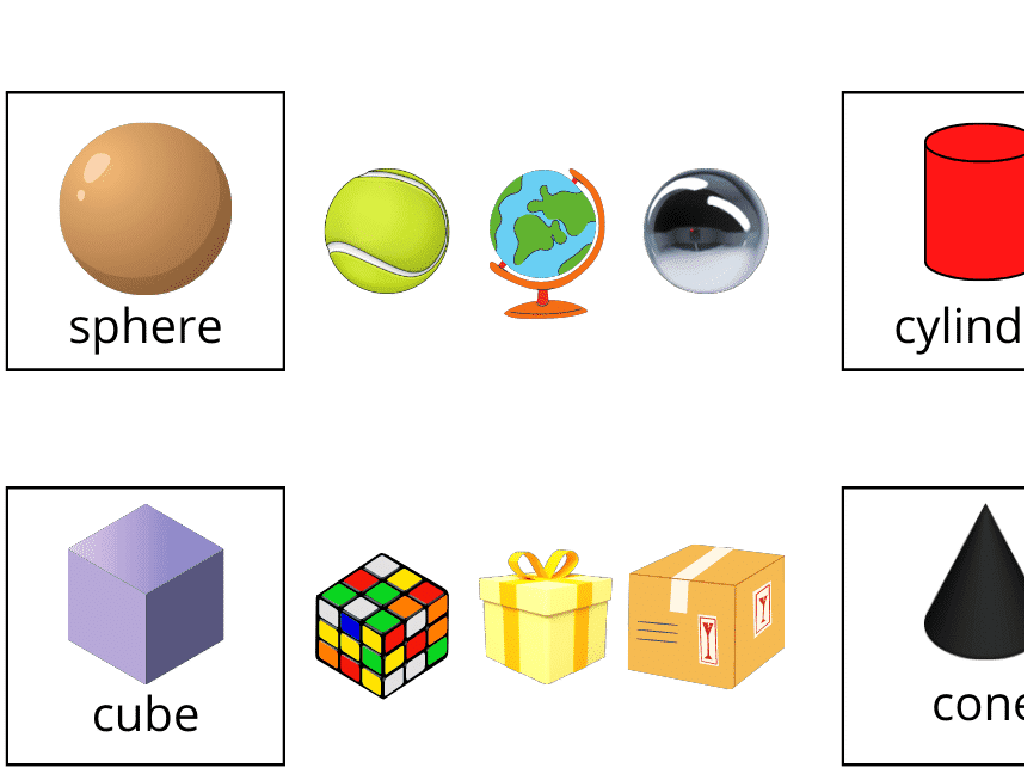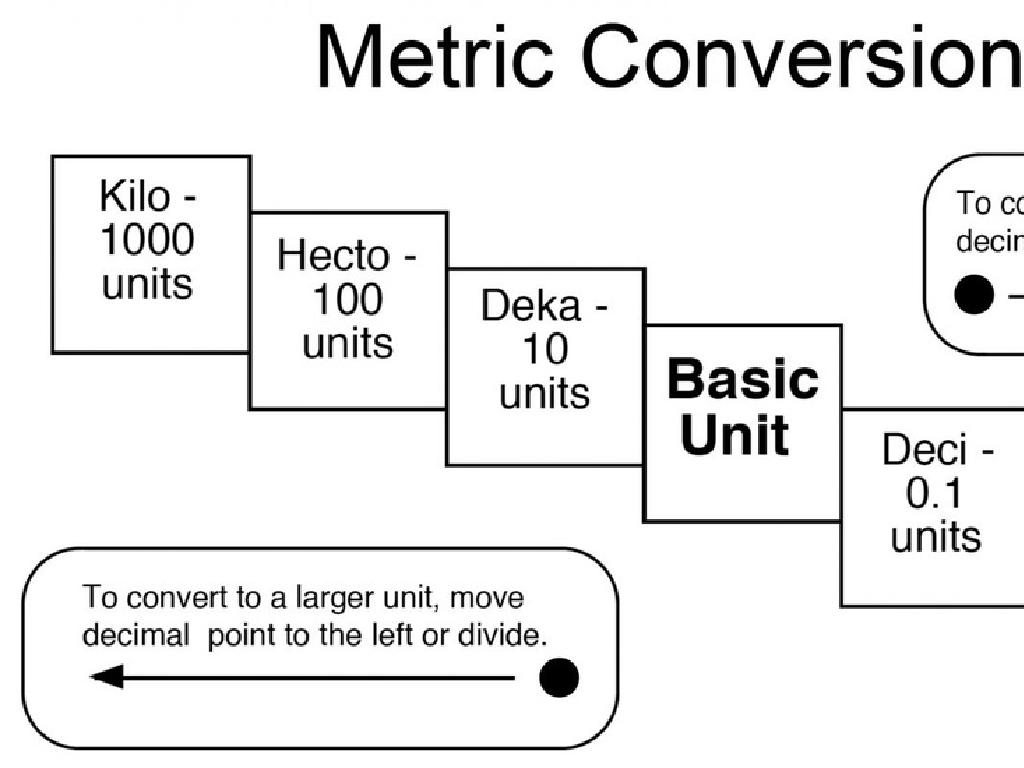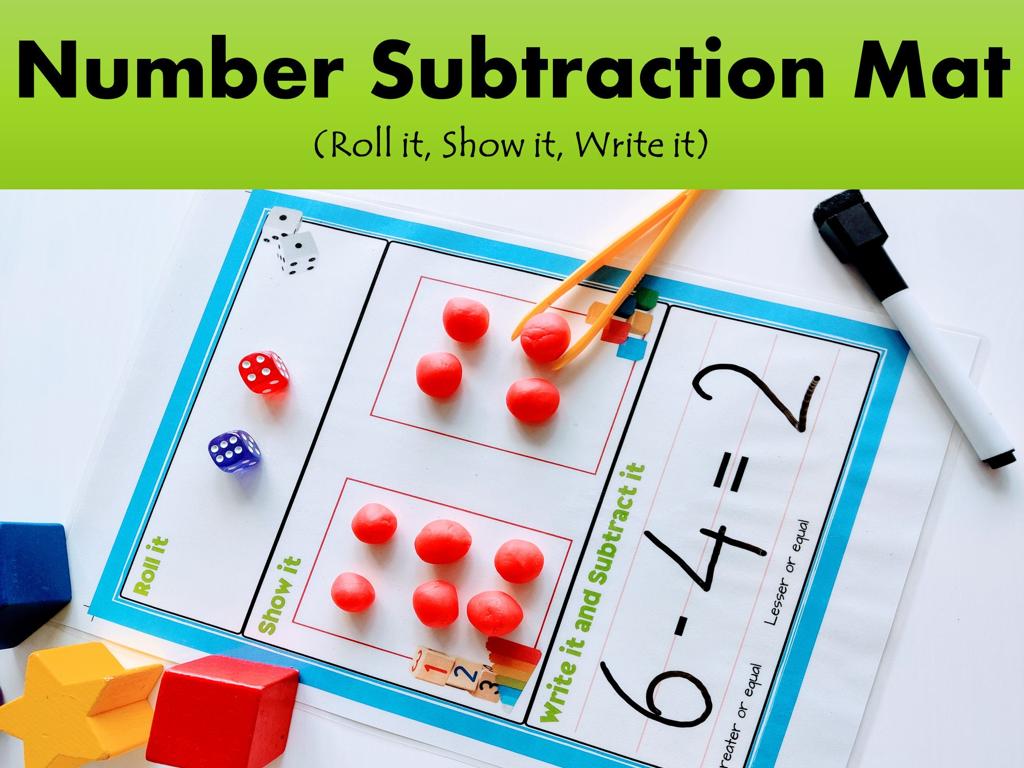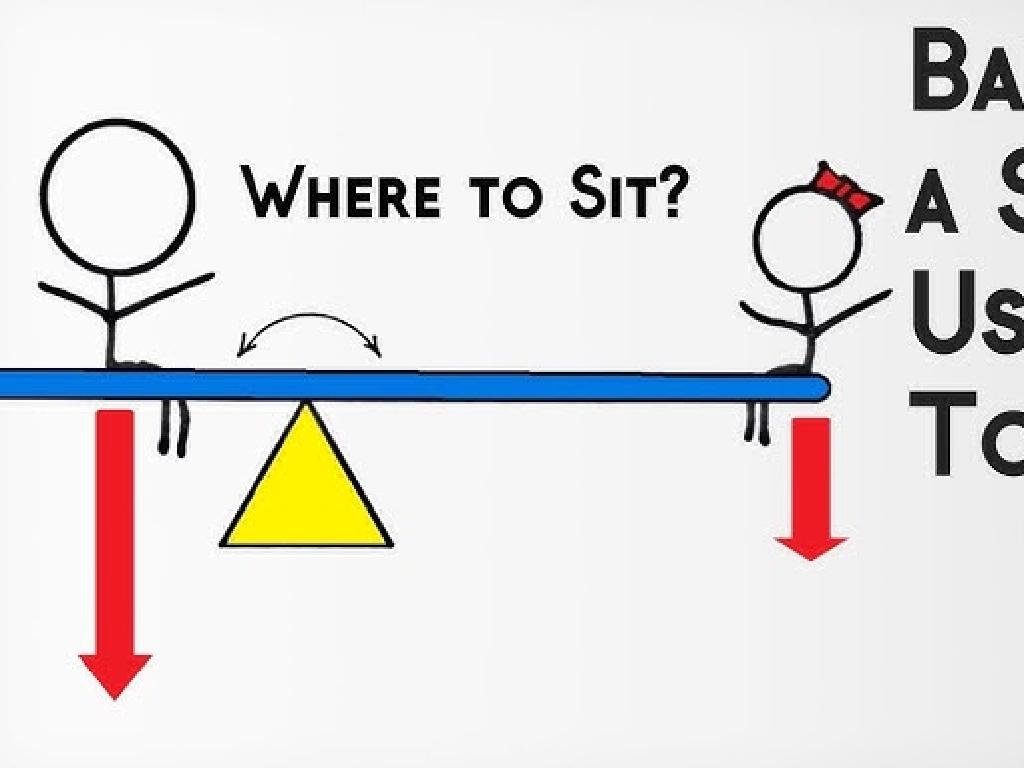Divide By Counting Equal Groups
Subject: Math
Grade: Third grade
Topic: Understand Division
Please LOG IN to download the presentation. Access is available to registered users only.
View More Content
Divide by Counting Equal Groups
– Division breaks into equal parts
– Like cutting a pizza into equal slices
– Division is sharing equally
– Like dividing 12 apples among 4 friends
– Daily life examples of division
– Practice with real objects
– Use items like candies or toys to divide
|
This slide introduces the concept of division to third-grade students by relating it to the idea of dividing things into equal parts or groups. Start by explaining that division is a way of breaking a whole into equal parts, similar to cutting a pizza so everyone gets the same size slice. Then, show how division is a form of fair sharing, like when dividing 12 apples equally among 4 friends, each person gets 3 apples. Highlight how division is used in everyday life, such as sharing snacks or dividing up chores. Encourage hands-on practice by having students use real objects like candies or toys to divide into equal groups. This tangible experience reinforces the concept and makes learning division fun and interactive.
Understanding Division: Sharing Equally
– Division: Sharing into equal parts
– Example: 10 apples for 5 friends
– If we have 10 apples and share them equally among 5 friends, each friend gets 2 apples.
– Division has 3 key parts
– Dividend, Divisor, Quotient
– Dividend is what we divide. Divisor is how many groups we divide into. Quotient is how many in each group.
|
This slide introduces the concept of division to third-grade students by relating it to the idea of sharing equally. Start by explaining division as a method of distributing a number into equal parts. Use the example of sharing apples among friends to illustrate this point in a relatable way. Highlight the three components of division: the dividend (the number being divided), the divisor (the number of groups to divide into), and the quotient (the number in each group after division). Ensure students understand these terms with additional examples if necessary. Encourage them to think of other situations where they might divide things equally, such as sharing toys or snacks.
Visualizing Division with Stars
– Group objects to understand division
– Example: 12 stars into 3 sets
– 12 stars can be divided into 3 equal groups
– Count stars in each set
– How many stars are in one group of the 12?
– Each set represents a division
– This shows us 12 divided by 3 equals 4
|
This slide is designed to help students visualize the concept of division by using a simple and relatable example. By grouping a number of stars into smaller, equal sets, students can concretely see how division works. The visual example uses 12 stars divided into 3 equal groups to illustrate this point. Ask the students to count the number of stars in each group to find the answer. This exercise not only helps in understanding division as making equal groups but also reinforces the concept of division being the opposite of multiplication. Encourage the students to draw their own sets of stars and divide them into equal groups as practice.
Dividing by Counting Equal Groups
– Division creates equal groups
– Division is splitting into equal parts or groups
– Example: 20 circles into groups of 4
– How many groups of 4 can we make with 20?
– Activity: Drawing and counting groups
– Let’s draw 20 circles and divide them into groups of 4 together
|
This slide introduces the concept of division as making equal groups. Start by explaining that division is a way of splitting a number into equal parts. Use the example of 20 circles to visually demonstrate how to divide them into groups of 4. For the activity, have students draw 20 circles on a piece of paper and then group them into sets of 4, counting how many groups they can make. This hands-on activity will help solidify their understanding of division. Encourage students to think about other situations where they might need to make equal groups. Possible variations of the activity could include using different numbers of circles or dividing into groups of different sizes to accommodate various learning levels.
Practice Time: Group Division
– Solve division problems together
– Example: 15 ÷ 3 equals?
– 15 toys shared by 3 kids, how many each?
– Work with a partner
– Discuss with your classmate to find the answer
– Share your answers
– Be ready to tell the class how many groups you found
|
This slide is designed to encourage collaborative learning and practice division by counting equal groups. Start by solving a problem together as a class to demonstrate the process. Use tangible examples, like dividing toys among kids, to make the concept relatable. Pair students up to promote teamwork and discussion, which can help solidify their understanding. As they work, circulate the room to offer guidance and ensure everyone is on track. Afterward, have a few pairs share their answers and explain their thought process to the class. This reinforces the learning and allows for peer teaching. Possible activities could include dividing classroom items, using counters or drawing pictures to represent division problems.
Division in Real Life
– Division in everyday life
– Sharing snacks as division
– If you have 10 cookies and 5 friends, how do you share?
– Discover more division examples
– Think of times when you split things equally
– Discuss your ideas in class
|
This slide aims to help students recognize division in their daily lives and understand its practical applications. Start by explaining that division is a way of sharing things equally. Use the example of sharing snacks to illustrate how division works: if you have a certain number of snacks and a certain number of friends, how can you give each friend the same amount? Encourage students to think of other scenarios where they divide things equally, like dividing toys or slices of pizza. During the class discussion, prompt them to share their examples and explain how they used division in those situations. This will help them see the value of division beyond the classroom and relate it to their experiences.
Class Activity: Group the Objects
– Divide objects into equal groups
– Use counters, marbles, or blocks
– Create as many equal groups as possible
– Find the number in each group
|
This class activity is designed to help students understand the concept of division by physically grouping objects. Provide students with a set of counters, marbles, or blocks and instruct them to divide these objects into as many equal groups as possible. This hands-on approach allows students to visualize the division process. Encourage them to explore different ways to group the objects and to determine the number of objects in each group. Possible activities could include grouping by color, size, or type, and then counting how many are in each group. This will help them grasp the idea of division as making equal groups. After the activity, discuss the different grouping strategies and how they found the number of items in each group.
Conclusion: Division and Equal Groups
– Division creates equal groups
– Equal groups ensure fairness
– Like splitting snacks among friends equally
– Division applies in daily life
– Helps with tasks like distributing supplies
– Review: Sharing equally is division
|
In today’s lesson, we learned that division is the process of splitting a number into equal parts or groups. This concept is crucial because it ensures that each group or person receives an equal share, which is a fair way to distribute items. We discussed how division is used in everyday situations, such as when sharing snacks or dividing up classroom materials among students. To reinforce the lesson, remind students that whenever they share something equally, they’re using division. Encourage them to think of other examples where they have used division outside of school. Review the key points by asking questions and prompting students to explain division in their own words.
Homework Challenge: Division Exploration
– Divide items into equal groups
– Illustrate or describe your groups
– Use drawings or sentences to show your work
– Create your division story
– Tell the story of how you divided items
– Share with the class tomorrow
|
This homework activity is designed to reinforce the concept of division by having students apply it in a practical, hands-on way. Encourage them to find objects like toys, fruits, or pencils and divide them into equal groups. They should then draw a picture of their divided groups or write a few sentences describing what they did. This will help them visualize the division process. Ask them to think of it as a story, with a beginning (the total items), middle (the dividing), and end (the equal groups). The next day, students will have the opportunity to share their experiences and learn from each other’s strategies, fostering a collaborative learning environment.






